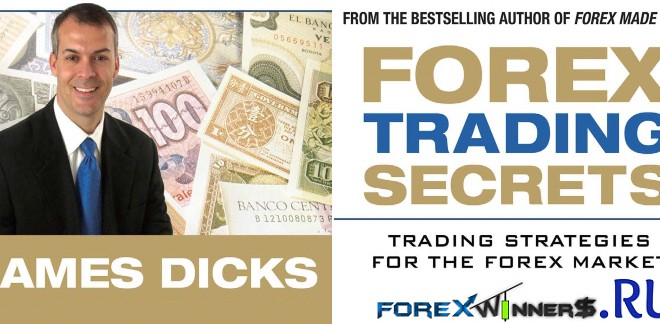Forex Trading Secrets-Trading-Strategies
By // JAMES DICKS
The FOREX (i.e., FOReign EXchange) market is an international market where the money (currency) of every country is sold and bought freely. It was launched in the 1970s at the moment of introduction of free exchange rates, and the price of one currency against another that occurs from supply and demand is determined only by market participants.
There is no external control, and competition is free because all the participants can decide to transact or not. In this respect, the FOREX is a perfect market because it can’t be controlled or monopolized by any of its participants. The enormous number of transactions executed day after day in a continuous activity make it the biggest liquid financial market.
According to various assessments, money masses in the market constitute up to US $4.5 trillion a day.
This market has seen recent turnover as high as US $6 trillion in a day, and the average most recently has been hovering at around US $3 trillion a day. The exact figure can’t be determined because the transactions are not centralized on a single exchange.
Content :
Part 1 The Basics
1 What You Must Know to Get Started
Back to the Basics: A History of the FOREX
FOREX versus Stocks
FOREX versus Futures
2 Major Currencies and Pairs
The U.S. Dollar
The Euro
The Australian Dollar
The Canadian Dollar
The British Pound
The Swiss Franc
The Japanese Yen
The New Zealand Dollar
The Dollar Index
The Dow Jones Industrial Average (DJIA)
Gold CFDs
Crude Oil
Cross-Rate Currency Pairs
Exotic Currency Pairs
Chinese Yuan or Renminbi
Swedish Krona
Norwegian Krone
The Iraqi Dinar
3 Anyone Can Learn the FOREX
Opening a Position
Trading on Margin
Managing a Position
Closing a Position
Pips and Lots
The Lot
Order Types
Where Is the Market Going?
Stops and Targets
Spreads and Swaps
Technical versus Fundamental
4 Preparing Yourself Adequately before Jumping
into the Market
FOREX Trading Accounts
Choosing a Broker
Tools
Who Trades the FOREX?
What Kind of Trader Am I?
Trading Techniques
The Trader’s Levels of Ascension
Part 2 Money Management
5 The Secret to Making Money
Are You Really Fit to Trade in the FOREX Market?
Trading Plans
Rules and Discipline
How the Market Works
Rules for Working with the Market
Paper Trading
6 How to Keep Your Profits
Money Management
Managing Risk
Leverage and True Leverage
Overtrading and Overconfidence
Overleveraging
Trade Expectations
Part 3 Trading Psychology
7 Mastering Emotions
Emotions of Trading
How to Get Out of a Bad Trade
Become a Pro
8 Mind over Matter for Huge Profits
Affirmations
Power of Networking
Part 4 Fundamental Analysis
9 Economics
What Does Economic Release Mean?
Fundamental Analysis
Dow Theory
Fundamental Indicators
Japan’s Monetary Policy
FOREX Currency Carry Trade
Interventions
Gross Domestic Product (GDP)
Trading the News
What Are Contrarian Indicators?
Part 5 Technical Analysis
10 Technical Indicators
Technical Analysis
Types of Charts Showing Price Action
Trend Indicators
Market and Volatility Indicators
Understanding Oscillators
A Unique Indicator: Ichimoku Kinko Hyo
Divergences
11 Technical Patterns
Candlesticks
Chartism Patterns
Reversal Patterns
Continuation Patterns
Elliott Waves
Harmonic Price Patterns
Fractals
Trading Naked (Only Price Action)
12 Support and Resistance
Support
Resistance
Trendlines
Moving Averages
Other Indicators
Entering Positions
Exiting Positions
Pivot Points: Do They Work?
Psychological Levels
Using Multiple Time Frames
Trend Is Your Friend
13 Automated Trading
Expert Advisors and Automatic Programming
Interfaces (APIs)
Advanced Robots: Neural Networks in the FOREX
Part 6 Building Your Portfolio
14 Secrets to FOREX Diversification
FOREX Options
Spot FOREX Options
FOREX Futures
FOREX Exchange-Traded Funds (ETFs)
Contracts for Difference (CFDs)
Commodities
Indices (Securities)
15 My Favorite Ways to Trade
Breakouts
Channeling
Hedging
Basic Oscillator-Based Strategy
Basic Moving-Average Crosses
Trading Gaps
Daily High-Low
 Forex Winners | Free Download Downlod free trading sysrems , indicators and forex E-books
Forex Winners | Free Download Downlod free trading sysrems , indicators and forex E-books

